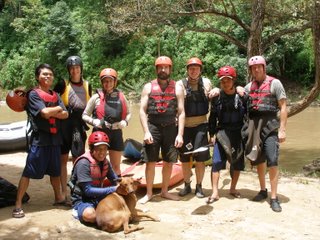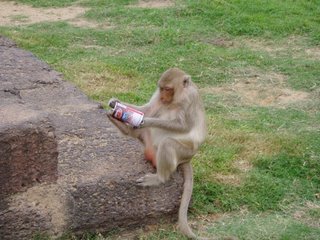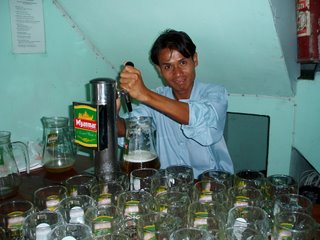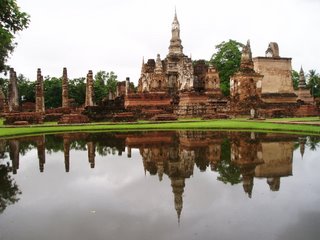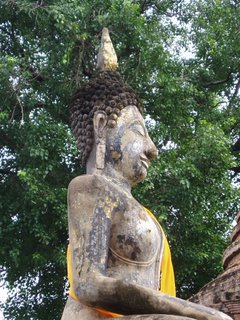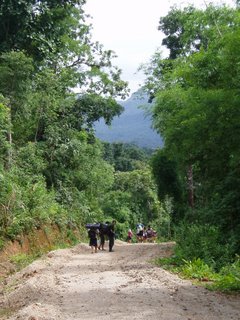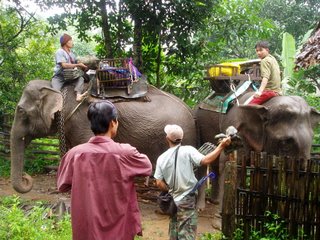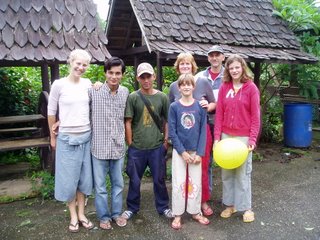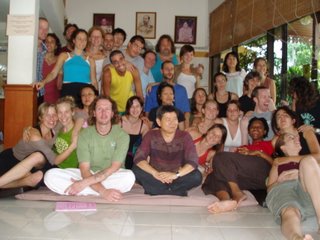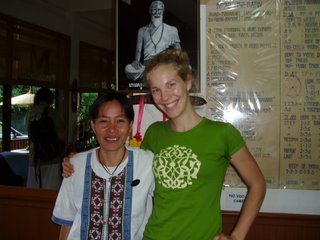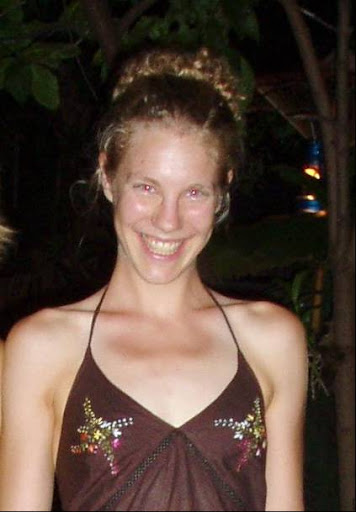I just returned from a two day silent meditation retreat near Chiang Mai. A group of twenty-five people (all foreigners, mostly from Holland and the United States) arrived at a temple called Wat Suan Dok at about 2 pm tuesday afternoon. We were given a short lecture on Buddhism by one of the monks, and then we piled into busses and drove about 30 minutes from Chiang Mai to a new mediation retreat center. The center is so new that it is not yet finished -- a work camp is set up next to the center to complete the library and dorm rooms. Luckily the most important parts of the center (the golden Buddha, temple, and kitchen) were finished.
When we arrived at the center we were assigned rooms, white clothing, and nametags that said "silence". For the next hour or so we had free time, and everyone wandered around the retreat lawn, not quite knowing what to do with free time, no books, no computers, and most importantly no talking.
At six pm we had a small dinner. Usually when people in Thailand go on Buddhist meditation retreats they do as the monks do, not eating after 11 am. I chose not to eat dinner, just to see what it would be like to go without food for an evening. As it turns out the lack of food at night is not so bad if you go to bed early -- monks are usually in their rooms by about 9:30 pm.
After dinner we met in the temple and learned about the different types of meditation. First, there is sitting meditation. The idea is to sit in a comfortable position (usually cross-legged) and focus on a single thing such as breathing in, and breathing out. Next is walking meditation. The monks demonstrated this type of meditation, picking up each foot slowly and placing it on the floor. While walking the focus should be on the feet -- the mind is thinking "Right foot goes thus. Left foot goes thus. Right foot goes thus...." The third type of meditation, lying meditation, is the most relaxing but quite dangerous because it is easy to fall asleep. Finally, counting prayer beads (108 on a string) is another type of meditation. If you get a number besides 108, you are not in the proper meditative state.
After the demos, it was our turn to try mediation. I quickly realized that sitting meditation is by far the most difficult for me. Sitting in a cross-legged position without moving for more than 5 minutes is painful. My legs begin to fall asleep. My back slumps. I fidget. I forget to focus on my breathing an instead listen to the bugs buzzing outside. The monks call this wandering mind "monkey mind". During our sitting meditation practice, each minute felt like ten. Walking meditation was quite enjoyable. I felt like I was learning how to walk again, feeling every muscle contract and release as I picked up each foot and set it down again. Lying meditation was great: I fell asleep!
To end the evening we chanted with the monks in Pali language, paying respect to the Buddha, Dhamma, and Sangha (I think). We also chanted in English and wished compassion on all living beings. Bedtime at 9 pm was welcome, because we were awakened at 5 am by a gong for 5:30 meditation practice. Morning practice was more of the same; sitting, walking, chanting, and some yoga as well.
After the morning practice we observed the Thai tradition of offering food to the monks. In Thailand, monks do not cook. Instead, from 6-7 am each day they walk from their temple with bare feet and collect "alms" from Thai people. I've really enjoyed my early morning runs here because of this spectacle -- watching monks, dressed in saffron robes, walking barefoot throughout the city and collecting breakfast is quite a sight!
After breakfast was a discussion on Buddhism and meditation. For the first time in 12 hours we broke our silence and talked about our experiences. An interesting conversation, much too long to repeat here but by far my favorite part of the meditation retreat experience. Most importantly, perhaps, I learned that Buddhists do not consider Buddhism a religion but rather a way of life.
Finally, we practiced sitting meditation one last time, ate lunch in silence, and returned to Chiang Mai. The bus ride back was quiet -- although we did not have to keep silent any longer, my fellow retreaters and I were suddenly happy to stay with our own thoughts for a bit longer.
Back to real life, I've realized a number of things:
1) Sitting meditation is not my thing. I prefer movement, such as yoga or running, to put myself in a meditative state.
2) Monks are happy, happy people despite (or probably because of) the simple lives they lead. The monks who organized our retreat maintained a sense of calm fun all of the time.
3) A day of silence does me a great deal of good -- without constant talking, my mind becomes more clear.

